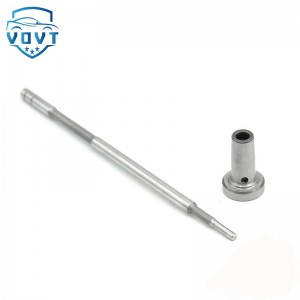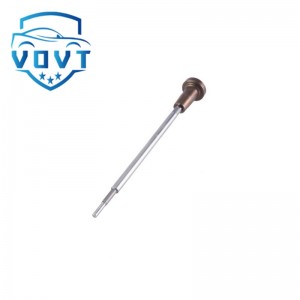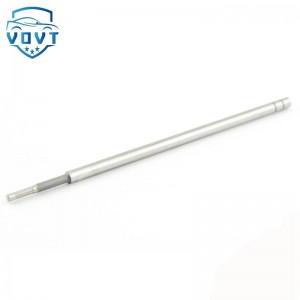High Precision New Diesel Injector Control Valve F00ZC01307 Valve Assembly for Fuel Injector Engine Spare Parts
Products Description
| Reference Codes | F00ZC01307 |
| Application | / |
| MOQ | 6 PCS |
| Certification | ISO9001 |
| Place of Origin | China |
| Packaging | Neutral packing |
| Quality Control | 100% tested before shipment |
| Lead time | 7~10 working days |
| Payment | T/T, L/C, Paypal, Western Union, MoneyGram or as your requirement |
Working process of injector valve assembly
The injector valve assembly is the core executive component that controls fuel injection and stop. Its working process is closely linked to the electromagnetic control of the injector and the change of fuel pressure. It can be divided into two stages: closed state (no injection) and open state (injection). The following is a detailed description:
Closed state (no injection)
When the engine does not receive the injection command, the valve assembly is in a closed state, which is specifically manifested as follows:
Solenoid valve power failure: The electronic control unit (ECU) does not send a signal to the solenoid valve of the injector, and the solenoid valve has no electromagnetic force.
Spring force dominates: The return spring in the valve assembly (such as the spring above the ball valve/valve stem) is in a naturally stretched state, and its elastic force presses the ball valve (or valve stem) tightly on the sealing surface of the valve seat, so that the sealing gap between the high-pressure fuel channel and the return oil channel is completely closed.
High-pressure chamber pressure maintenance: The high-pressure fuel transported by the common rail pipe enters the high-pressure control chamber (or the pressure chamber above the needle valve) of the injector through the oil inlet channel. At this time, because the valve assembly is closed, the high-pressure fuel cannot be leaked through the return oil channel, and the pressure in the control chamber remains in the same high-pressure state as the common rail pipe.
Needle valve closed: The pressure of the high-pressure control chamber and the elastic force of the needle valve spring work together to press the needle valve against the sealing seat surface of the nozzle, and the combustion chamber is isolated from the high-pressure oil circuit, and no fuel is injected.
Open state (when injecting fuel)
When the ECU determines that fuel injection is required, the state of the valve assembly switches quickly to trigger the injection process:
Solenoid valve energized: The ECU sends an electrical signal to the solenoid valve, and the electromagnet generates electromagnetic force to attract the armature (connected to the ball valve/valve stem of the valve assembly) to move upward.
Valve assembly opened: The electromagnetic force overcomes the elastic force of the return spring, driving the ball valve (or valve stem) away from the valve seat, so that a passage is formed between the high-pressure control chamber and the return oil channel.
Control chamber pressure relief: The fuel in the high-pressure control chamber quickly flows into the return oil channel through the gap of the opened valve assembly, and the pressure drops rapidly (to a low pressure state).
Needle valve opens for fuel injection: As the pressure in the control chamber decreases, the pressure difference between it and the high-pressure fuel (directly from the common rail pipe) below the needle valve increases. When the difference exceeds the elastic force of the needle valve spring, the needle valve is lifted up, and the high-pressure fuel is sprayed into the combustion chamber in an atomized state through the nozzle hole of the nozzle.
Key fit and characteristics
Precision seal: The clearance between the ball valve and the valve seat (or the valve stem and the valve sleeve) of the valve assembly is extremely small (usually 3-6 microns), ensuring no leakage when closed and smooth fuel flow when opened.
Response speed: The generation and disappearance of electromagnetic force and the movement of the valve assembly must be completed in milliseconds (such as the response time of a high-speed diesel engine injector is about 0.1-0.5 milliseconds) to achieve precise control of multiple injections (pre-injection, main injection, and post-injection).
Wear resistance: The component material is mostly high-strength alloy (such as tungsten steel, ceramic coating) to withstand the scouring of high-pressure fuel and high-frequency movement wear.
Summary
The injector valve assembly achieves precise control of fuel injection through the chain reaction of "solenoid valve control - valve switch - pressure change - needle valve action". It is the core component in the high-pressure common rail system that determines the injection timing, injection amount and injection rate, and directly affects the engine's power, economy and emission performance.























